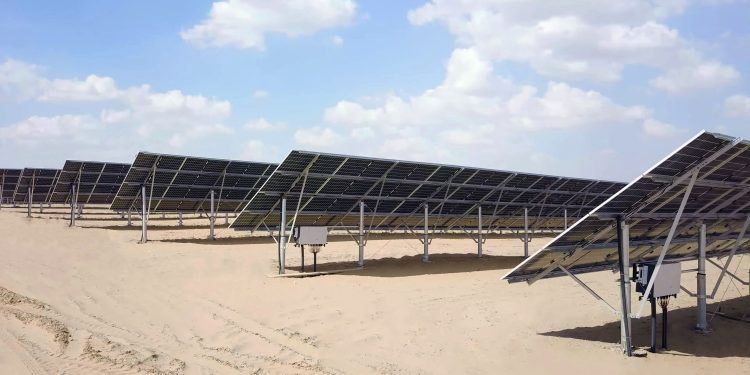China Energy Engineering Corp Ltd has made headlines with a $972 million agreement to develop a significant solar energy initiative in Saudi Arabia, a move that underscores the Middle Eastern country’s growing allure for Chinese producers of photovoltaic equipment, spurred on by its dedication to renewable energy.
A consortium involving three China Energy subsidiaries and a project firm created by Saudi Arabia’s ACWA Power, the Public Investment Fund, and Saudi Aramco Power Co, signed the contract for the 2GW Haden Photovoltaic Project. This venture is slated to start operations by early 2027 and is forecasted to produce about 156 billion kilowatt-hours of electricity over 25 years. This will contribute to cutting down nearly 147 million metric tons of carbon emissions, aligning with Saudi Arabia’s ambition to reach net-zero emissions by 2060.
The Kingdom has pledged to boost the proportion of renewable energy to half of its total by 2030 and to draw in 20 gigawatts of renewable energy endeavors annually starting in 2024, aiming for a target of 130 GW by 2030.
This burgeoning market potential has made Saudi Arabia an attractive destination for photovoltaic investments. The China Photovoltaic Industry Association reported that in the first half of the year, Chinese PV product exports reached $18.67 billion, with modules comprising about 87 percent of this value. Notably, Saudi Arabia has risen to become China’s fifth-largest market for module exports.
Beyond Saudi Arabia, other nations in the Middle East are also embarking on ambitious energy transformation agendas, channeling investments into alternative energy sources and diminishing their dependence on traditional fossil fuels.
According to InfoLink Consulting, solar energy demand in the Middle East is anticipated to climb from 20.5-23.6 GW in 2023 to 29-35 GW by 2027, with countries like Turkiye, the United Arab Emirates, and Saudi Arabia leading the surge.
Leading solar product manufacturers, including Jinko Solar, GCL Technology, and Trina Solar, are expanding their investments in the Middle East, covering a spectrum of the industry from polysilicon to battery modules and auxiliary materials. Experts highlight that an integrated photovoltaic industry ecosystem is emerging in the Middle East, with Chinese firms having a significant footprint.
Lin Boqiang, from the China Institute for Studies in Energy Policy at Xiamen University, commented on the region’s ample sunlight resources and low costs of solar power generation. He pointed out that the economic and demographic expansion in the Middle East is fueling electricity demand. Moreover, the need to mitigate the climate impact of fossil fuels and the reduced costs of photovoltaic projects are propelling many countries to actively pursue energy transitions, thereby increasing the demand for PV solutions.
Additionally, the domestic market is witnessing a compression of profit margins due to low module prices, while major markets such as Europe and the United States are erecting more trade barriers. This is prompting Chinese companies to venture into emerging markets like the Middle East.
A Sinolink Securities report indicates that regions including Saudi Arabia, the UAE, and Turkiye have initiated renewable energy projects’ tendering plans to foster PV installation growth.
The Middle East Solar Industry Association has documented that from 2011 to 2023, the Middle East issued tenders for 35 GW of PV projects, with 10 GW already in operation.
With Saudi Arabia having tendered 6.7 GW of solar and wind projects this year and planning more to meet its 20 GW annual target, industry insiders predict this will expand the scope for PV installations and create additional opportunities for Chinese manufacturers.


